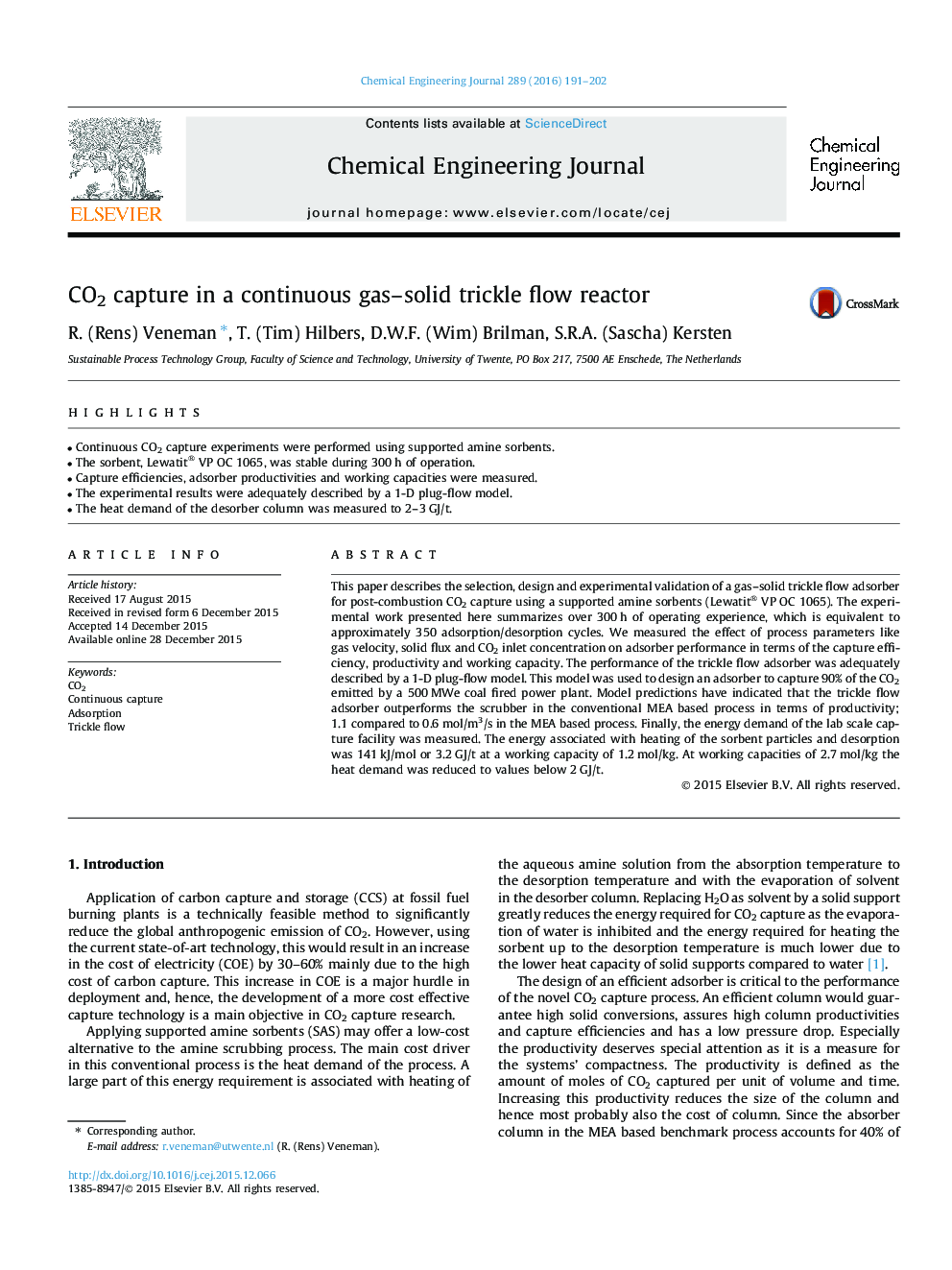| کد مقاله | کد نشریه | سال انتشار | مقاله انگلیسی | نسخه تمام متن |
|---|---|---|---|---|
| 145844 | 456352 | 2016 | 12 صفحه PDF | دانلود رایگان |

• Continuous CO2 capture experiments were performed using supported amine sorbents.
• The sorbent, Lewatit® VP OC 1065, was stable during 300 h of operation.
• Capture efficiencies, adsorber productivities and working capacities were measured.
• The experimental results were adequately described by a 1-D plug-flow model.
• The heat demand of the desorber column was measured to 2–3 GJ/t.
This paper describes the selection, design and experimental validation of a gas–solid trickle flow adsorber for post-combustion CO2 capture using a supported amine sorbents (Lewatit® VP OC 1065). The experimental work presented here summarizes over 300 h of operating experience, which is equivalent to approximately 350 adsorption/desorption cycles. We measured the effect of process parameters like gas velocity, solid flux and CO2 inlet concentration on adsorber performance in terms of the capture efficiency, productivity and working capacity. The performance of the trickle flow adsorber was adequately described by a 1-D plug-flow model. This model was used to design an adsorber to capture 90% of the CO2 emitted by a 500 MWe coal fired power plant. Model predictions have indicated that the trickle flow adsorber outperforms the scrubber in the conventional MEA based process in terms of productivity; 1.1 compared to 0.6 mol/m3/s in the MEA based process. Finally, the energy demand of the lab scale capture facility was measured. The energy associated with heating of the sorbent particles and desorption was 141 kJ/mol or 3.2 GJ/t at a working capacity of 1.2 mol/kg. At working capacities of 2.7 mol/kg the heat demand was reduced to values below 2 GJ/t.
Journal: Chemical Engineering Journal - Volume 289, 1 April 2016, Pages 191–202